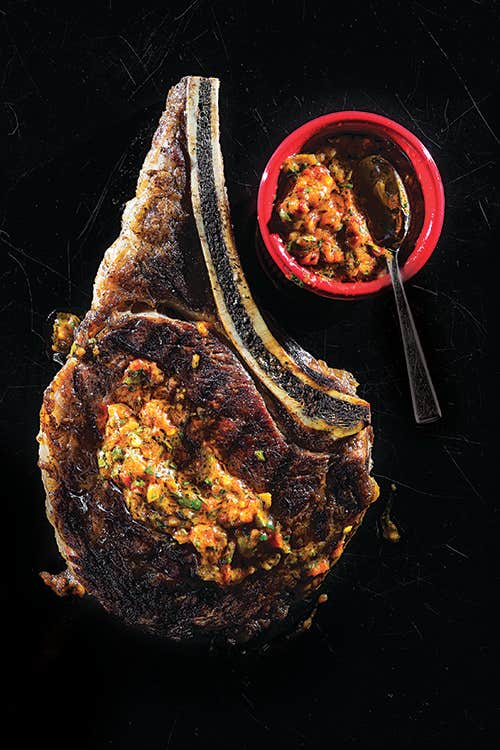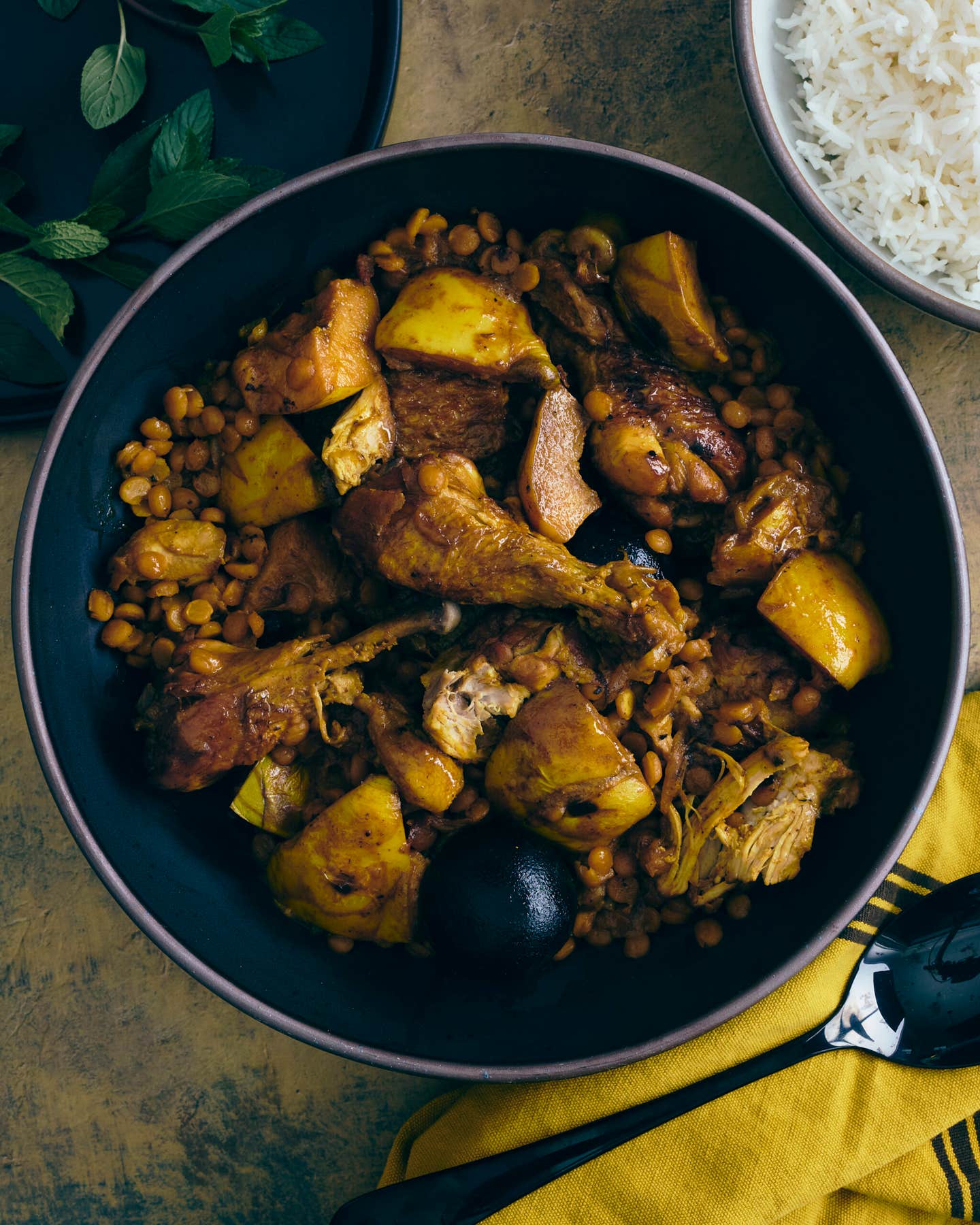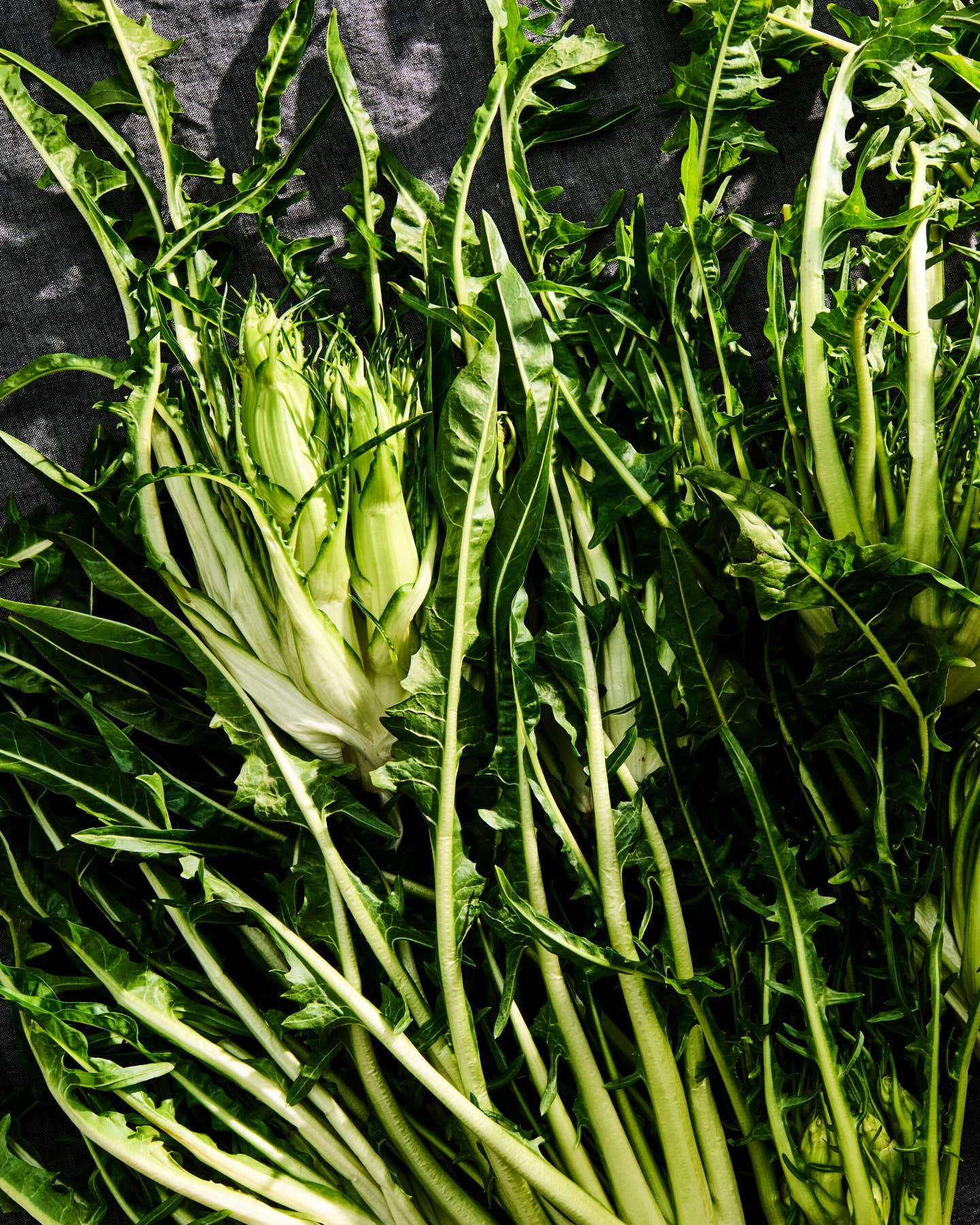
Is It Done Yet?
Grilled Rib Eye with Sweet-Hot Pepper Sauce
Chef Craig Koketsu brings extra luxury to a dry-aged rib eye by basting it in rendered beef fat. A chunky chile and herb sauce makes a piquant side dish. Get the recipe for Grilled Rib Eye with Sweet-Hot Pepper Sauce »
When it comes to cooking a steak, most restaurant cooks have the seemingly magical ability to take the meat off the heat at exactly the right time. For most of us at home, however, learning to cook a steak to perfection is a process of trial and error. But take heart: you don't need X-ray vision to divine the color of the inside of a thick steak; just some basic know-how.
As a steak cooks, its flesh becomes firmer and loses its red color, proceeding from "blue" (nearly raw) to rare (deep red) to medium rare (deep pink) to medium (light pink) to medium well (gray with a hint of pink) to well-done (gray throughout). Many agree that medium rare is usually the level that brings out a steak's best qualities. Indeed, any steak from the chuck or the round of a steer should be cooked no further, since those firm, hardworking muscles will quickly become chewy.
The most important thing to remember before turning on the flame is that steaks cook fast (especially those from lean, grass-fed cattle). Also know that a meat thermometer usually isn't a good option, since it's hard to get a reliable reading using most standard models; also, following many published guidelines for judging doneness by temperature—including those issued by the USDA—will ensure that your steak is overcooked. Many tricks have been devised over the years for determining the doneness of a steak. Some cooks do it by checking firmness: an old (and, we've found, unreliable) rule says a rare steak should feel like the soft flesh of the crook of the hand when it's unclenched. Others follow a ten-minutes-per-inch rule.
But for our money—and when we're shelling out for a prime-grade porterhouse, that's not an inconsiderable factor—the single best solution is the tried-and-true "nick and peek" method. Make a small cut in the steak, take a look inside, and judge the color for yourself. Until you've confidently mastered your own method, though, err on the side of caution and take the steak off slightly before you think it's achieved its desired doneness. Also keep in mind that with thicker steaks, lean cuts (like filet mignon) cook faster than fattier ones (like rib eye) and that the presence of a bone prolongs cooking time.
Keep Reading
Continue to Next Story











